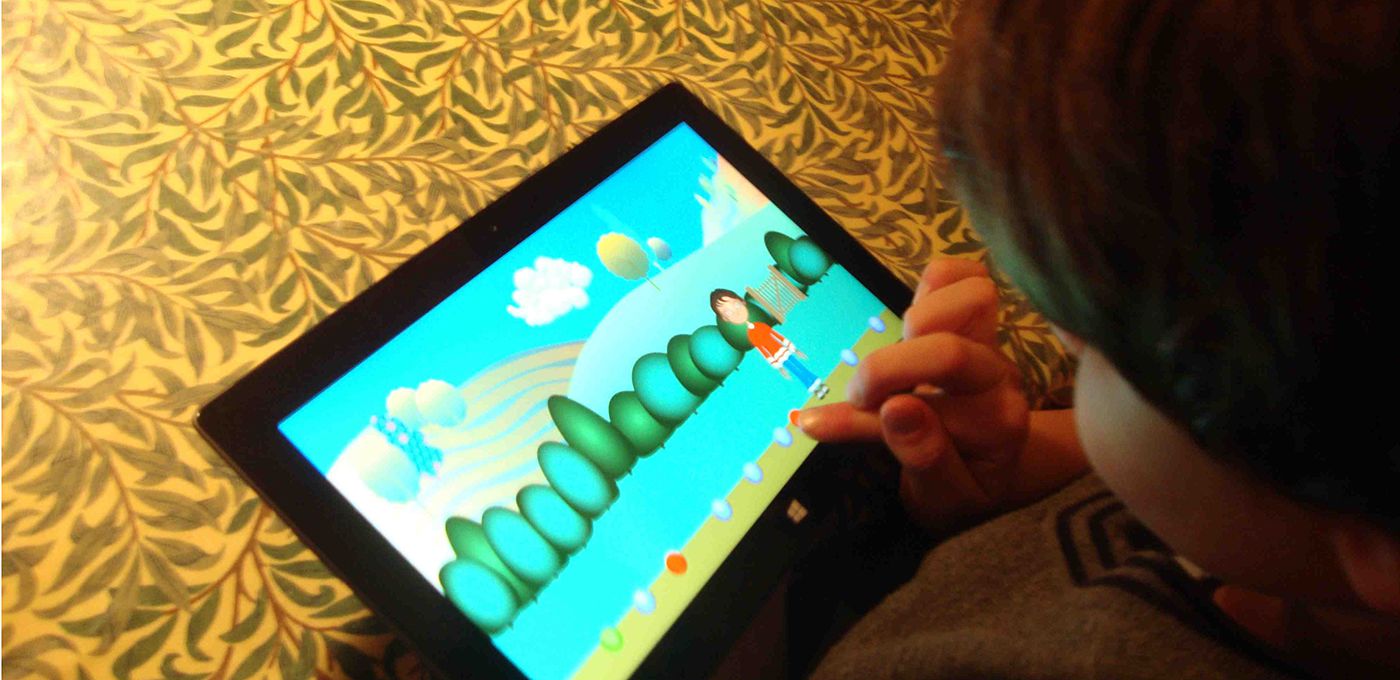SHARE-IT: School-Home Research Environment through Intelligent Technologies
How devices can be used to create a scalable intelligent learning environment for children with autism.

5 December 2017
By Amy Chamier.
The SHARE-IT project focused on participatory research with schools, parents and industry through which it aimed to formulate the requirements for a robust, intelligent and authorable serious game for supporting children with Autism Spectrum Conditions (ASCs) in exploring, practicing and acquiring social interaction skills. SHARE-IT built on the ECHOES project (ESRC/EPSRC funded), in which a computer game for children with ASCs was designed and evaluated.
Research questions
SHARE-IT's chief focus was in addressing challenges identified through the ECHOES project and other related projects that relate to the need for:
a robust system architecture and implementation of educational technologies
- for a considered selection of appropriate technologies and techniques to allow for multi-device and operating system deployment, the development of an intelligent (in the Artificial Intelligence sense) computer game needed to support social interaction, and flexibility for the environment to be authored by laypersons.

An artificially intelligent agent, called Andy, demonstrates to a child how to sort bouncy balls according to their colour. The activity serves to support the development of joint attention in children and turn taking as Andy often points to the specific balls and also takes turns in putting them in appropriately coloured vases.
Key findings
The key findings of the project relate to the inextricable nature of the relationship between user involvement in the design and software implementation of the technology. Specifically, in order to sustain the motivation of the users to participate in the technology design projects, it seems paramount that such projects actually produce the technology that can be used promptly and reliably. This necessitates a fast shift from low-fidelity, paper and pen prototypes, to implemented, manipulable systems representing the designs that can be appraised in quick design-implementation-test cycles.
This particular finding has profound implications for necessary requirements that a technology must fulfil in order to be fit for real-world educational use.
Apart from the pedagogically sound underpinning, aimed to ensure relevance of the technology to the educational contexts, other requirements include:
- industry-standard software engineering of the technology to ensure reliability of the system during day-to-day usage
- portability of the software between different devices and operating systems
- authoring capabilities for non-technical users, including teachers, parents and children, to ensure extendibility of the software capabilities beyond those which may be desirable and/or identified before or during a project.
 Close
Close

